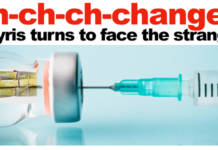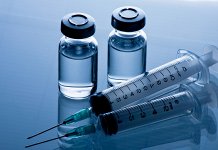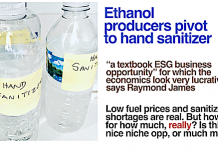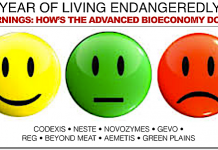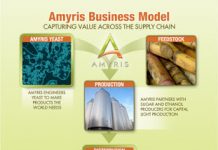Jim Lane
Despite a dismal beginning to earnings season, as Amyris, Arcadia disappoint, the Eco-Emirates of Emeryville look set for huge expansion in 2016.
In California, Amyris (AMRS) reported Q4 revenues of $9.6mn and a net loss for Q4 of $41.9 million ($34 million after elimination of non-recurring items), well below Wall Street consensus estimates of $32.4 million. “The fourth quarter resulted in our best renewable product sales quarter to date during 2015 while also highlighting our challenge in completing our product finishing and shipping in time for one of our customers,” said Amyris CEO John Melo, who noted in a call with investors that a $15 million revenue chunk was pushed into 2016 via a production delay.
Meanwhile, Arcadia Biosciences (RKDA) also took a beating, reporting $1.3 million in Q4 revenues, down by more than haf from 2014, and a net loss of $4.1 million for the quarter, compared with $1.6 million in Q4 2014. Arcadia also blamed timing, with interim CEO Roger Salameh noting that “While a major financial milestone was not recognized in 2015, we have made multiple advancements for our later-stage products that have the potential to lead to future milestone payments and, ultimately, to commercialization of our pipeline.”
Over at Amyris
The Business Progress
The big news?
Two items to note. 2016 revenue guidance of $90 million -$105 million. And, a planned sale of “ non-core assets expected to generate approximately $40 million-$60 million in net proceeds.” We’ll have to see what those non-core assets exactly are. All that Amyris would say is that those assets are generating 10% of the revenues and 20% of the costs.
Highlights for Amyris at year-end? From a volume point of view, the highlight may well be a record quarter in squalane shipments and recently-launched hemisqualane. Or, new major agreements with two mystery partners for farnesene applications related to nutraceuticals and polymers and converted two other partners from collaborations to farnesene supply agreements supporting Brotas plant utilization expectations through 2020
But we note the successful launch of the Biossance Beauty Brand on HSN last month with what Amyris described as “better-than-expected sales metrics, leading to increased number of shows planned for 2016 that will feature expanding line of products.”
 Also, let’s not overlook Muck Daddy, perhaps the most strikingly-named product ever to appear out of the bioindustrial revolution. Here, Amyris points to “successful AAPEX and SEMA automotive aftermarket trade show presence and SCORE International (Baja racing series) and Pirelli World Challenge (PWC racing series) sponsorships.”
Also, let’s not overlook Muck Daddy, perhaps the most strikingly-named product ever to appear out of the bioindustrial revolution. Here, Amyris points to “successful AAPEX and SEMA automotive aftermarket trade show presence and SCORE International (Baja racing series) and Pirelli World Challenge (PWC racing series) sponsorships.”
The Tale of the Tape
GAAP revenues were $9.8 million, compared with $11.6 million for the fourth quarter of 2014, and $8.6 million for the third quarter of 2015. The increase from Q3 2015 was despite a delay in a large product shipment to a collaboration partner anticipated for Q4 2015. Product sales in Q4 2015 of $5.2 million, compared to $4.7 million in Q4 2014 and $4.2 million in Q3 2015. Collaboration and grants revenues contributed $4.6 million to total GAAP revenues for the quarter, down from $6.9 million in Q4 2014, and increased from $4.4 million in Q3 2015.
Cost of products sold increased to $11.3 million for Q4 2015 from $9.3 million for the same period a year ago driven by higher sales, product mix and a higher yielding pilot run of our latest farnesene strain.
Net loss attributable to Amyris common stockholders for the fourth quarter of 2015 was $41.9 million, or $0.23 per basic share and $0.28 per diluted basis. Adjusted net loss, excluding non-recurring items, and excluding stock-based compensation, was $34.0 million, or $0.16 per basic share.
Reaction from Fortress Amyris
“We expect to complete a significant portion of the delayed product shipment during the current quarter with the remainder later in the year,” said Amyris CEO John Melo, “and continue to make very good progress in the expansion of our collaboration portfolio. We entered 2016 with key commitments in place for farnesene applications, which represent a substantial percentage of our total planned annual farnesene production volume for 2016. The volumes we expect under these farnesene supply agreements represent initial supplies for high-volume applications, and alone, could fully utilize our Brotas plant through the end of 2016.”
Melo added, “We are focusing on our core business, which is driven by solving supply challenges, delivering innovative products and providing our partners with a strategic advantage underpinned by high-performance, sustainable products. We expect our key results for 2016 to include divestment of non-core assets that we believe will generate approximately $40 million to $60 million of net proceeds, closing new collaborations in personal care and pharmaceutical industries and delivering on our farnesene supply agreements.”
Reaction from the Street
Jeffrey Osborne of Cowen & Co wrote:
Revenue in the qtr was soft & further magnified due to timing of shipments. Record low farnesene production costs and the continued launch of consumer products gives us confidence in our stock assumptions going forward. The Q4 equity raise helped to delever the BS, but we would continue to look for a steadier stream of commercialized product introductions to get more constructive on the stock.
Amyris reported GAAP Revenues of $9.6mn, significantly below both Cowen and the Street’s ests. of $36.3mn and $32.4mn.
Amyris continues to find success commercializing its various products/technologies. It advanced fiver major applications in 2015, and continued to apply its products in a wide variety of end markets, including tire manufacturers, fragrance companies, and various industrial and healthcare applications. Given Amyris’s expanding product lines and the commercialization of new products in 2016 we are using an EV/Sales multiple of ~4.5X. The resulting price target is $2.00 (prior $2.50). As new molecules are introduced and the direct to consumer new products hit shelves, we could see upside to our estimates. However, we are taking a wait and see approach on execution before getting more constructive on the stock.
Over at Arcadia
Arcadia Biosciences announced Q4 revenues of $1.3 million and for 2015, $5.4 million, down from Q4 2014’s $2.8 million and full-year 2014 revenues of $7.0 million.
Hmmm.
According to Arcadia, “the decrease primarily reflected lower license revenues, as the fourth quarter of 2014 included a major milestone not replicated in the fourth quarter of 2015,” said interim CEO Roger Salameh.
But the company continues on its path. Salemeh added, “We’re maintaining a consistent level of funding for R&D and SG&A to support our growth, while continuing to tightly manage expenses. We’re particularly pleased with the regulatory, commercial and intellectual property advancements we’ve made this year and we continue to manage our pipeline to focus on those products and crops that create the greatest value for our grower customers, our commercial partners and our stockholders,” said Salameh.
The Business Progress
Investors might well rue that “a major financial milestone was not recognized in 2015,” but there are some big wins that are worth noting.
In December, Dow AgroSciences and Arcadia announced a strategic collaboration to develop and commercialize yield and stress traits and trait stacks in corn. The collabor
ation leverages Arcadia’s leading platform of abiotic stress traits with Dow AgroSciences’ enabling technology platforms, input traits, regulatory capabilities and commercial channels.
In the same month, Arcadia and BGI, the world’s largest genomics organization, announced a collaboration to create an extensive rice genetic resource library to advance food crop research and development.
And, In October, two years of field trials in Africa with leading lines of Nitrogen Use Efficient (NUE) rice demonstrated an average yield increase of 19 percent over the conventional control lines.
The Tale of the Tape
Revenues for the quarter were $1.3 million and for the year were $5.4 million, compared with $2.8 million for the fourth quarter and $7.0 million for the full year 2014. The decrease primarily reflected lower license revenues, as the fourth quarter of 2014 included a major milestone not replicated in the fourth quarter of 2015. Operating expenses for the full years of 2015 and 2014 included $596,000 and $1.7 million in non-cash inventory reserves, respectively, for the company’s GLA safflower oil product.
The company’s loss from operations for both the fourth quarter and the full year of 2015 was greater when compared with the loss from operations for the similar time periods in 2014. Lower revenues and increased operating expenses led to a loss from operations of $4.1 million in the fourth quarter, compared with $1.6 million for the same period in 2014. For the full year, loss from operations was $15.6 million in 2015 compared with a loss from operations of $15.2 million in 2014 as reduced operating expenses partially offset lower revenues for the year.
Highlights to watch, as seen from Fortress Arcadia
In the investor call, Graham Wells of Credit Suisse asked “if there any traits in particular that we, as investors, and the market should take a particular interest in following, anything that you’re really excited about over the next 12 to 24 months?”
Salemeh responded, “I’m excited about all of them, that’s why we take the portfolio approach. But I think over the next 12 to 24 months, traits, staying with the traits for the moment, you should be thinking about HB4 Stress Tolerance in soybeans, Nitrogen Use Efficiency in rice and wheat, and salt tolerance in rice. Those are from the productivity side. Those are, I think, the most exciting traits. From the product quality side, one trait that we probably haven’t talked about much but is an important one, and I think could be pretty significant value driver for the company is resistance starch wheat. And one of the things that I’m particularly excited about with that trait trade is it’s a non-GM product that’s really about human nutrition. We’re in advanced stages of breeding and field development. And the pathway to commercialization, frankly, is about being in competitive breeding programs and just scaling up volume to meet our customers’ demand.”
The Bottom Line
Traits a-go-go (in the case of Arcadia) and tripling of revenues (in the case of Amyris). Those strike us as the major takeaways from this quarterly round. Although, amongst other things beginning with a T, investors are probably emphasizing that the Time for Take-Off is Today, not Tomorrow.
Jim Lane is editor and publisher of Biofuels Digest where this article was originally published. Biofuels Digest is the most widely read Biofuels daily read by 14,000+ organizations. Subscribe here.

